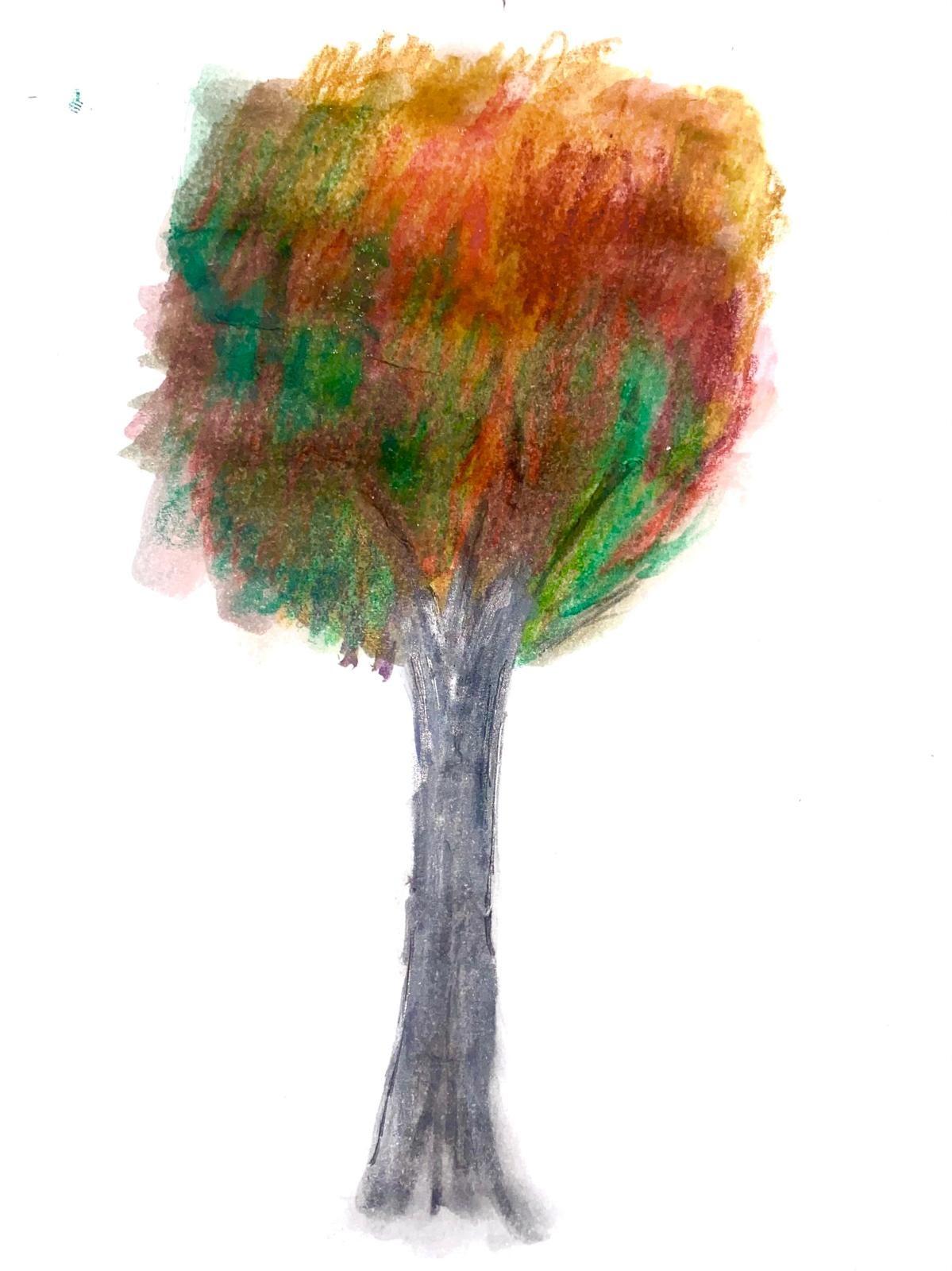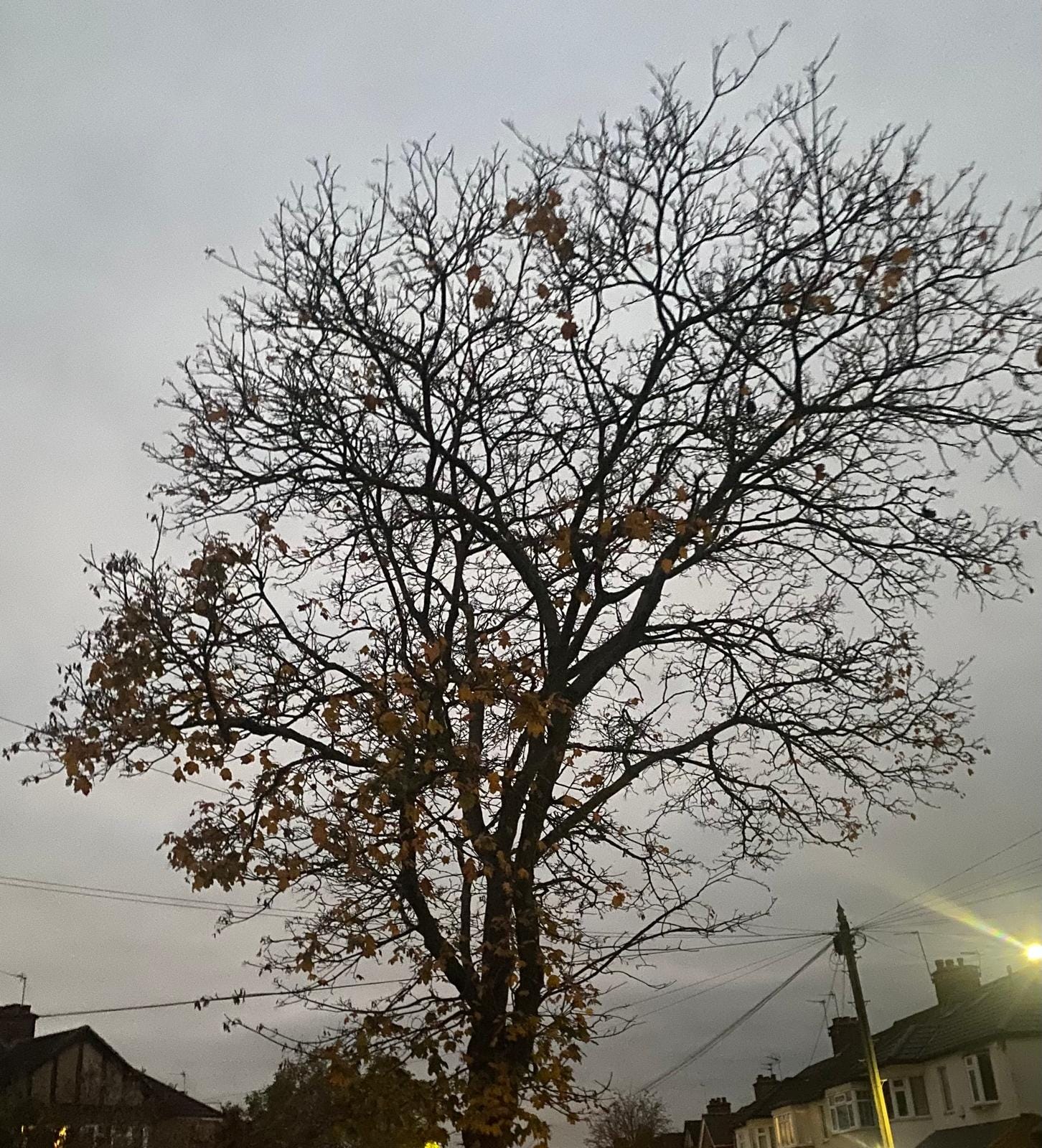The Privilege Of Passing Time
What a child's observation about a tree taught me
It has been a year since I moved to the suburbs of north London.
I deeply miss my old home deep in the south east of the city, its faded graffiti upon mired grot, the tapestries of greys that denoted its aesthetic mood board, and the slight, though pungent, aroma of burning asphalt. Having spent most of my life in the area, I had, naturally, taken it all for granted. If anything, the smells and sounds that now give it a sense of place in my life, had long felt confining. Like most kids in the suburbs, I spent much of my life plotting my escape, believing that an escape of a bigger city – New York, or Berlin, for example, though realistically, somewhere with a tube station – with established, more impressive and sweeping histories, would give me some sense of purpose. I desperately wanted to be part of something bigger but constantly changing, instead of decaying suburban miscellany seemingly stuck in time.
Perhaps its because I’m much older, but since moving, I have found myself appreciating the trees near my house. I make an effort to notice them on my walks to the high street, whether rushing to make the train on time for work, or to get some groceries I’d once again forgotten in Big Asda™. I have had the privilege to witness the majesty of their outgrowth, and the efforts required for them to emerge into full bloom, so that for a short period, they can be a home for nesting birds, and for cats seeking shade. There is one tree in particular – a regular Plane x Hispanica tree, according to the council’s website– that I have become enamored by. Not for any reason to do with botany or London’s ecological history, but rather that in the Autumn, its leaves transformed from a deep Forest Green to an Auburn I had only ever seen in art books on colour theory. I tried to write about it in my diary, and I found that I couldn’t really explain it. Even now, I’m struggle. How do you describe a colour, let alone one that you had never come across before in real life? I took a few photos on my Iphone, which didn’t really do it justice, and also came off as much more violet in its tone. Still beautiful, but not really the same thing.
(Said tree, but now shed of its leaves)
Over the last few weeks, I’ve been thinking about how to articulate this encounter into writing, with the aim of figuring out why this seemingly natural event feels more significant). The procrastination in writing this comes out of this struggle.
As I write, I am aware that it may be the last time I have longer than a half hour to do so for a while. Our child is due later this month, and as with most parents, in my experience, the imminence of birth feels like a unique moment of time, in and of itself. The acceleration of time, a temporal shift, feels both exhausting and exhilarating. But, with all the hospital and clinical visits associated with pregnancy, many memories are to be found in hospital waiting rooms, with other people trying to understand their new relationship to time. Often, this feels slow and tedious, and I have tried to get through it in two ways: Either being stuck in my own head, confronting thoughts that I’d best describe as self-destructive or on my phone, scroll through all the horrors of the world the children in this ward are about to be born into. Usually, and despite knowing the ramifications, I have picked the latter, and as such, I have spent a great deal of the time preparing for our child, watching and reading about other children dying. I’ve watched dozens of videos of Palestinian children killed by weapons of mass destruction, and seen horrific photographs of Sudanese women, some as young at ten, who have taken their own lives in the midst of their own bloody genocide. Whenever I see these things, I immediately feel disorientated, being in a place associated with life, care and dignity, while witnessing the significant number of people who are denied such essentials in our shared life. I also think about how, at a very basic level, they have all been denied what I consider to be the most human experience of all – to witness the passage of time.
It was a child walking to nursery with their father, who reminded me of this.
The child was clearly as infatuated with this tree as I had been. Their father asked what hadchanged about the tree since they last saw it. “It was green….now its….yellow?..red? orange?” In the end, rather than consulting a complex colour chart on Google, they both decided it could be all of them. It wasn’t really about how the tree looked at all – it was what it represented. For both myself and this child, the tree signified a privilege of watching time pass with peace and quiet, an honour to be in place with a natural beauty that existed before both of us, and may exist long after we are gone. It was a reminder that we were all growing and changing, but that what had set us apart, was the freedom to observe this change.
As I finish writing this, the leaves have mostly fallen from the tree. It has returned to resemble the character I first encountered a year ago. I stood in front of it and noticed that it, too, had altered. Some of the branches had darker spots and crevices, and it seemed like there had been more foliage on the top, but fewer branches on its sides. Perhaps I was just seeing things. Though, even if so – how lucky were we to be witness to that?
This is a free newsletter. But, if you would in theory pay for some of this, I would encourage you to donate to humanitarians currently working in Gaza and Lebanon to assist those displaced and in need of food and medical care. Please do consider donating to the organisations listed below:
Lebanon Aid Initiatives: https://docs.google.com/document/d/1PigQ6J-PVy-gisrcSh1-TMhD1X2PK2BxJe-ElQyKLm0/edit
Gaza Esims: https://t.co/EObMhyM5aO
Medical Aid for Palestinians



